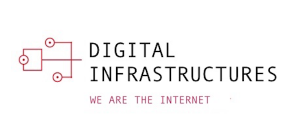- eco Association and NeRZ (Netzwerk energieeffiziente Rechenzentren) jointly publish white paper “Utilization of Waste Heat in the Data Center”
- Experts provide impetus for sustainable digitalization
Data centers in Germany currently convert more than 13 billion kilowatt hours (kWh) of electricity per year into heat, most of which is released unused into the environment. This corresponds roughly to the total electricity needs of a large city like Berlin. This is the arresting finding of a white paper “Utilization of Waste Heat in the Data Center” – which proceeds to illustrate the wide range of possible uses for waste heat from data centers. An English-language version of the white paper was published today by the eco Association and NeRZ (Netzwerk energieeffiziente Rechenzentren).
“In our bid to have data centers operating more sustainably in the future, the white paper introduces successful concepts and talks through opportunities and challenges,” says Dr. Ralph Hintemann, Senior Researcher at the Borderstep Institute and one of the study’s authors.
Promote possibilities for waste heat utilization
Governments should support the industry’s keen interest in making meaningful use of waste heat, which is currently still largely unused. For example, in Germany, 50 percent of data center operators state that they see medium to very high savings potential through waste heat utilisation.1 Already at a temperature level of between 30 and 40°C, waste heat can be used for swimming pools, laundries, or greenhouses located near to the data center.
The spectrum of possible applications expands considerably at higher temperatures and extends to the connection of data centers to local and district heating networks. This can be achieved, for example, by using heat pumps. But due to the high electricity prices in Germany, there are only a few economic concepts in this country, says Béla Waldhauser, Spokesperson for the Alliance for the Strengthening of Digital Infrastructures in Germany. He goes on to comment that, “The EEG levy on electricity for the operation of heat pumps is absurd from an environmental policy point of view and stifles many opportunities for re-using waste heat economically and thus making digitalization more sustainable.”
Waldhauser is also of the firm opinion that allowing for proactive measures such as waste heat utilization makes far more sense than the type of strident action currently underway in the Netherlands. Here, Amsterdam’s local government called a halt to new data center building in July of this year, with this standstill likely to endure until mid-2020. But other routes for lowering energy consumption make far more sense, and are critical for Europe as a business location.
Scandinavian countries use waste heat more effectively
As a positive example, Waldhauser mentions Scandinavian countries, where the use of waste heat is an integral part of energy policy concepts. “In Sweden, for example, there is a broad societal consensus for a stronger promotion of environmental aspects in digitalization – this also includes the sensible and sustainable use of waste heat from data centers,” says Waldhauser, pointing to the projects implemented and described in the white paper. “In Germany, the general conditions are unfortunately not so good, so there are only a handful of such flagship projects in this country.”
Ralph Hintemann, Senior Researcher at the Borderstep Institute and one of the white paper’s authors, is of a like mind: “In Germany, we need foresighted planning and systematic support for the construction of new heating networks. In order to make a significant contribution to the sustainable shaping of digitalization, what we need are more incentives to deliver heat.”
1 NeRZ German-language survey http://ne-rz.de/wp-content/uploads/2017/11/NeRZ_Kurzstudie_RZ-Markt_Stand-20171129.pdf
Download “Utilization of Waste Heat in the Data Center” white paper



